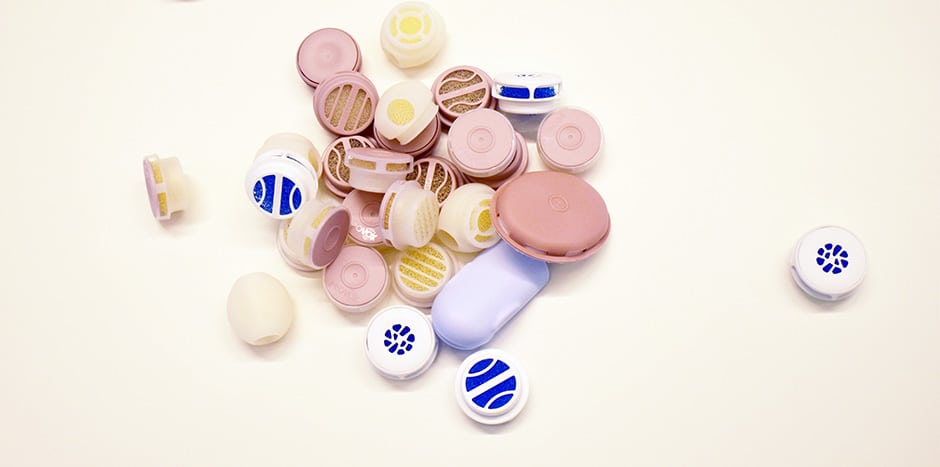Articles & Blog posts
Easy access
Make sure you can always access your favourite content by connecting My Content to your email.
Connect my emailAlready connected?
If you have already connected My Content to your email all you need to do is verify your email.
Verify my email15 November 2024
Your Total Laryngectomy Guide
This Total Laryngectomy Guide will help and guide you through your surgery and recovery after your laryngectomy. Information before surgery is key to a better recovery.

This Total Laryngectomy Guide was created to inform you about what to expect after surgery.
Take one step at a time.
The initial time after the surgery may be challenging for some people. But try to remember, most people who have had a total laryngectomy go on to live normal active lives.

As you read through this section, grab a paper and pen and write down any questions you may want to ask your clinical team. They are there to help you and will want you to be fully prepared for your surgery, this includes answering any questions you may have for them.
About Your Surgery:
Now you have been told by your doctor that you will need a total laryngectomy. You will go to the hospital where a surgeon will remove your voice box (vocal box), the larynx, during your operation.
Your voice box – larynx:
Your voice box, or vocal voice, is located above your windpipe, the trachea. It is the opening to your airway and essential for breathing, speaking, and safe swallowing.
Learn how to breathe, speak and swallow after surgery:
- Breathing: When you inhale and use your nose, your voice box opens to let warm, humid air reach your lungs.
- Swallowing: When you eat, chew and swallow, your voice box changes its position. This way your airway is closed to keep food and liquid from entering your lungs.
- Speaking: In your voice box you have two tissue folds called vocal folds. When you talk or sing, they vibrate, and that´s when you create a sound.
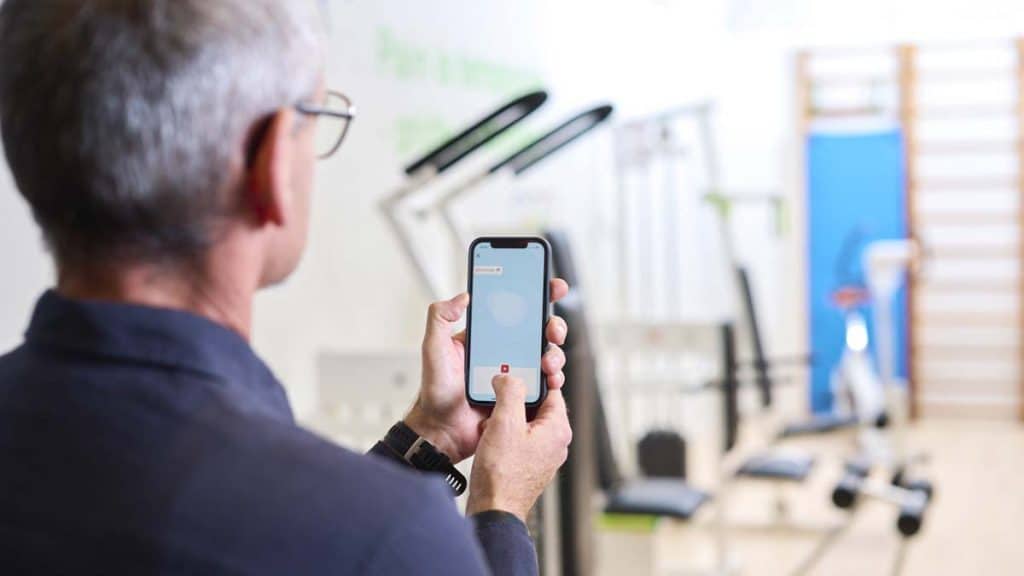
A great team will take care of you:
At the hospital, you will meet a lot of different people. It might feel overwhelming, and sometimes you might feel like you need to answer the same questions repeatedly.
They will perform a medical examination, take tests and more. The clinical team is there to help you, they have different roles to make you feel comfortable and prepared.
Read here about different functions and roles
- Surgeon – this is the person who will carry out the surgical procedure
- Anesthetist - this is the person who is responsible for keeping you asleep and pain free during surgery and pain free after your surgery
- Speech pathologists – while at the hospital, they teach how to speak after surgery
Why a total laryngectomy?
A laryngectomy is a lifesaving surgery where your voice box will be removed.
Learn how to breathe after a laryngectomy:
The surgery will affect parts of your life. Your body and your lungs know how to breathe. But you will need to learn how to breathe through the stoma in your neck. There are also useful tools you can use to help your breathing as well as exercises to do.
Speaking after a laryngectomy:
You will find another way to communicate and speak. At the hospital, you will be taught how to speak after your total laryngectomy by a speech therapist.
Voice recovery:
There are different options for speaking. Ask your medical team what option is best for you.
After your surgery:
The length of the surgery depends on your personal circumstances. This is something your surgeon or nurse will go through with you. You will wake up in a recovery room and then be moved to your room at the hospital. At many hospitals, it is custom to share a room with others.
Length of hospital stay:
The length of your stay depends on your situation and surgery, but it is typically 2-3 weeks. You will be able and allowed to eat again typically around one week after surgery. That is when you will be trained to speak.
You will have stitches or staples in your neck for about two weeks. Usually, they will be removed before you go home. If you go home with the stitches still in, you will return to your local hospital at a later date to have them removed.
During the time period after surgery, you will experience some discomfort. There will be a team at the hospital to help ease the discomfort. They will make sure that you can take care of yourself, so you feel confident when returning home.
Preparing for your surgery:
Before your surgery, you will have some appointments with the doctor, nurse, and other medical professionals. There will also be some tests that need to be completed.
When meeting the medical team before the surgery:
- Bring a full list of all medications: with prescription, without prescription, vitamins, minerals, nutritional supplements, creams, patches etc.
- Results from tests you might have done from other hospitals: cardiac stress test, echocardiogram, blood tests, etc.
- Name and telephone number to your family doctor, health center, family and/or friend that can be contacted
If you have not been advised otherwise, you can stay on your current medication until you and your doctor have had your first pre-surgical meeting.
After this meeting, you will be advised on what medications/treatment you can continue with and what medications/treatments you must pause before your surgery.
During the pre-surgical meeting, you may or may not need to go through some tests, such as blood tests, x-rays, EKG electrocardiogram, and similar. Your medical team will know what kind of tests you will need for your personal situation.
If you are worried about the surgery, tell your nurse, and your doctor. Your nurse might advise you to talk to someone, and he or she will also inform the medical team at the hospital.
Surgery day:
When the day of surgery is here, try to relax. If you are feeling worried or stressed, tell your team at the hospital.
Remember to remove anything that is loose like jewelry, watches, hearing aids, dental prothesis etc.
Walking is good before and after surgery, and during your healing period.
Sometimes a patient will walk to the operating room assisted by nurses, or a patient will be wheeled into the operating room on a hospital bed.
Upon entering the operating room, you will see a lot of people focusing on different devices. This might feel overwhelming. Remember, they are there to help you and they are used to performing surgery.
During surgery:
You will not feel or remember anything from the surgery. You are fully asleep, breathing through a tube that is placed through your mouth and down into your windpipe.
You might also have a catheter for urine during the surgery.
The breathing tube will be removed once the surgery is finished.
After your surgery:
You will be moved to a recovery room, or to the ICU, where you will slowly start to wake up. There, nurses will check your temperature, pulse, blood pressure, and oxygen levels. They will also ask you about your pain and provide you with pain relievers.
When the nurses think the time is right, they will take you to your hospital room.
On the ward:
The nurses will show you how to call for help, assist you if you need help and guide you through your recovery and hospital stay. You will also be introduced to others working at the hospital.
Pain relief:
Your nurse and medical team will ask you about your pain, and they will help you to control your pain. Remember, if you start to feel some discomfort, let your nurse know early on so the discomfort does not get any worse.
At the hospital pain relief can be given intravenously, or via a PEG (percutaneous endoscopic gastrostomy) or through your NG Tube (nose tube), as mentioned in the next section.
You will get help with pain relief when leaving the hospital and returning home.
Download a free hospital packing list
Click hereTubes :
You may have tubes attached to your body when you wake up. They could be any of the following:
- Laryngectomy tube: A tube placed in your neck stoma to keep it from closing.
- Urinary catheter: For your urine, the medical team will want to keep track of your daily urine levels.
- Nasogastric tube (Nose tube): You will have a small tube in your nose to provide nutrition, food, and medicine to your stomach.
- PEG: Percutaneous Endoscopic Gastrostomy
Depending on your surgery, you may have some surgical drains from your skin to allow any fluid to be collected.
Communicating after a laryngectomy:
While in the hospital, patients will be taught by a speech pathologist how to start speaking. In some places, patients start talking with a voice prosthesis on day 7 after a total laryngectomy.
In other places, patients start talking with an electrolarynx approximately 5 days after the laryngectomy.
Bring some paper and pens. Many save their notes in a box at home.
You can also use a small whiteboard with an erasable pen.
Walking after surgery:
As mentioned earlier in this section, your medical team will want you to walk and move as much as possible. It can be exhausting, a bit painful in the beginning, and not something you want to do all the time. But walking around the ward will lower the risk of post-operative complications and will make your recovery easier.
Walking is also excellent for your stomach. Moving usually activates your intestines and can prevent constipation and gas.
Eating after a laryngectomy:
After a laryngectomy, you will not be able to eat or drink during the first recovery phase. Your mouth and neck need to heal first.
Oral diet is the goal to achieve as soon as possible. The tubes are only there to assist. Accomplishing a good swallowing is mandatory.
Nutrition, food, drinks, and medication will be given through your nose tube.
Try to chew even though you don´t have anything to chew on. It is a great way to train your muscles and your mind body memory.
Swallowing after a laryngectomy:
Once you can swallow liquid food, your nose tube will be removed.
After a few days, you can slowly move to soft food before starting with harder food. Avoid trying food such as biscuits and crackers in the beginning. Remember, you will not choke. It might feel uncomfortable, but you won’t choke.
Swallowing is just as it was before the surgery. In the beginning, you might need some help. Use your tongue to push the food towards your food pipe (esophagus). You may also need to drink more as you are eating.
If you have been through radiation or chemotherapy the nose tube might stay longer. Sometimes the medical team want to carry out an x-ray before removing the tube.
If you have any questions, ask the medical team. Write the questions down as they come to you, so you don’t forget them. You can ask them at your earliest opportunity.
Taking care of your stoma after a laryngectomy:
Directly after your surgery, your nurse will take care of your stoma. You will also be taught how to take care of your stoma by yourself.
Pay attention to the instructions and practice as often as possible at the hospital. At the hospital, you will receive support if needed, but at home, you will need to take care of yourself.
Note: Even if you are living with a partner, it is of great importance to be able to take care of your stoma yourself. You cannot wholly rely on another person; they might not be around all the time. In the beginning, you might have some extra assistance at home after leaving the hospital. You should still practice and try to do as much as possible by yourself. Over time you will find that the care for your stoma will be very minimal and takes little time.
- Cleaning will help you to keep the stoma free from secretions and mucus.
- Cleaning will also help your stoma to get nice fresh air into your lungs.
- Suction might be needed if your nurse thinks so, then you will be shown how to use the suction machine and how often.
After a while, this will become a routine and take less time.
Heat and moisture exchanger:
To allow your lungs to function in the best possible way, using an HME is of great importance. When breathing through your nose, the air that goes down to your lungs is warm and humid thanks to the functions of the nose.
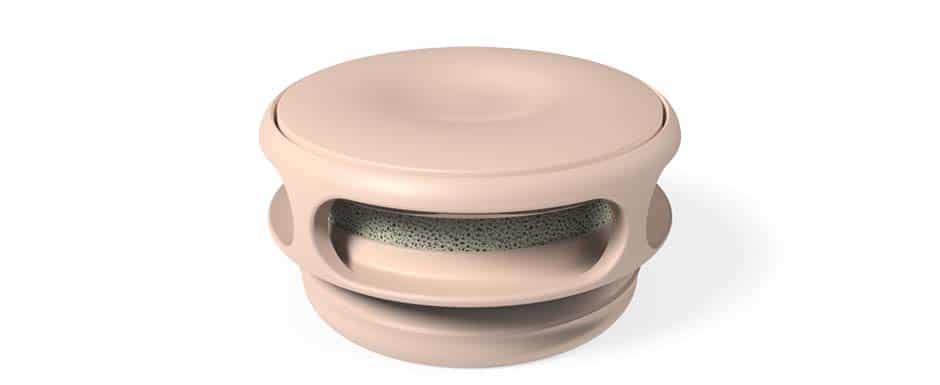
When breathing through your stoma, the air that reaches your lungs is cold and dry. It is like breathing through a mint pastille as one laryngectomized patient said. Cold dry air affects the lungs negatively. It can increase mucus and breathing this way will also stop the Cilia from working. Cilia are hairs in our lungs and airway whose job it is to waft away all the particles we breathe in through the airway. These particles are carried by mucus and are expelled through our nose or swallowed.
After your surgery, these particles and mucus will be expelled through your stoma. Think of it as blowing your stoma instead of blowing your nose.
Using an HME is just like having a nose for your lungs. It improves your lung health. And using the best HME for every occasion can improve your daily life.
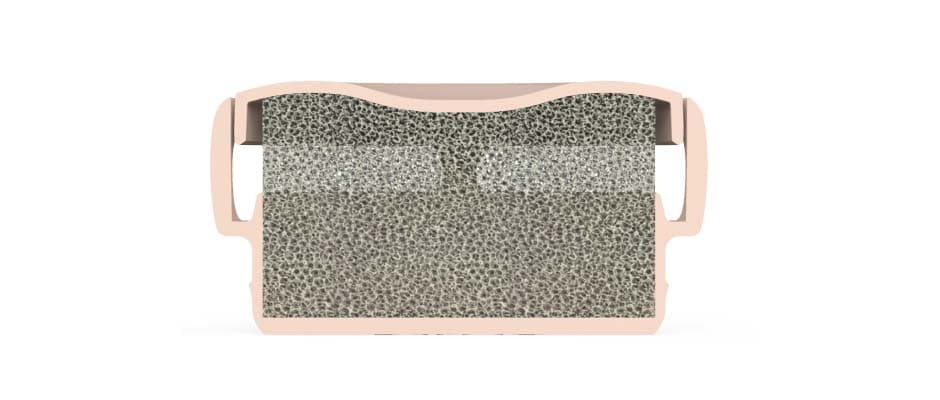
Use an HME every day and night. You will receive HMEs at the hospital, make sure you bring the HMEs you need when returning home.
Laryngectomy tube:
You might use a soft tube, known as a laryngectomy tube, to prevent your stoma from getting smaller or for wound healing.
Your medical team at the hospital will show you how to use the tube and how to clean it.
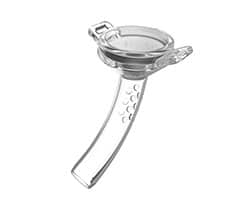
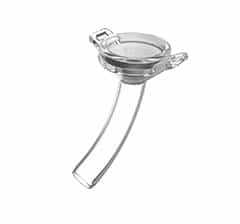
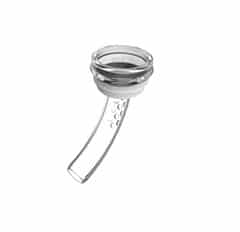
Showering:
Water is a risk for laryngectomized people due to the stoma. At the hospital, you will be shown how to shower safely.
There is a special product you can use when showering. Make sure to bring one home with you.
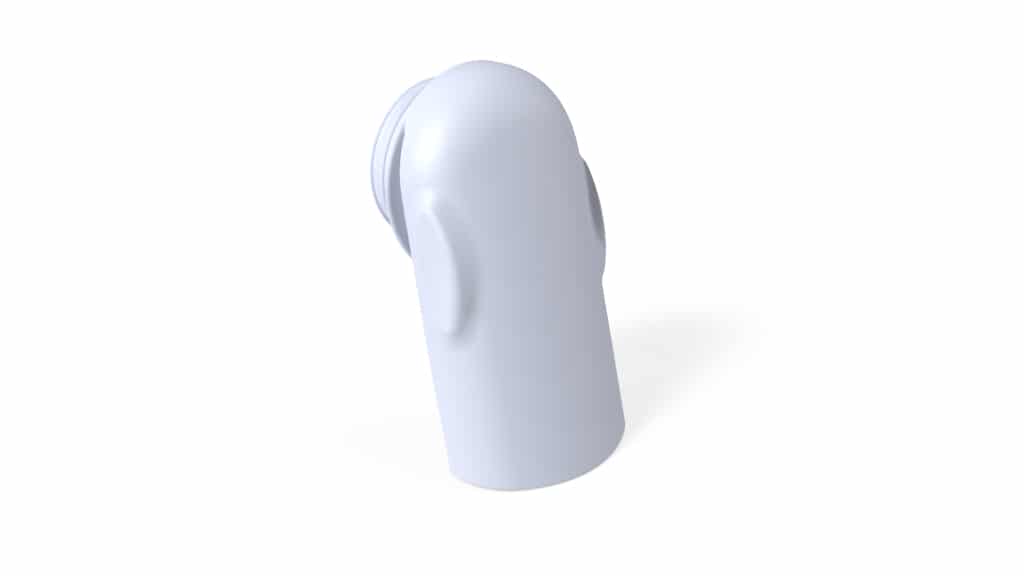
Going home:
Prior to going home, you will meet with your clinical team and discuss all aspects of being independent at home. They will also identify if you will need some extra assistance.
Upon discharge from hospital, if you need a suction machine, the hospital will more than likely lend you one as usually you would only need it for a brief time.
You will also be given:
- HMEs
- Shower aid
- Adhesives
- Prescription for pain relief medication, HMEs and stoma care.
Home:
It can be a relief to go home, but also a bit scary leaving the security of the clinical team at the hospital.
Try to live a life as “normal” as possible. Take daily walks and breathe some fresh air – even if it is raining.
Order a medical ID bracelet and a card to keep in your wallet to inform healthcare professionals and others that you have a stoma in your neck in case of an emergency.
Mental and physical pain:
It is difficult to say for how long you will feel pain, it differs between different people. You will receive pain medication so you shouldn´t be in too much pain.
Here are some tips for managing your pain at home:
- Take your medications at the time you are told to do. Don´t wait, take the medicine on a regular basis as prescribed by your doctor.
- Call your contact/nurse if the pain relief medicine is not helping you.
- If your doctor hasn´t told you otherwise, avoid alcohol and driving if you are using strong pain medication.
- As time goes on and healing is progressing, you will be able to decrease the amount of pain relief.
- Do not take more pain relief than is prescribed.
- Keep track of when and how much medication you take. Write it down.
- Some pain relief medication can cause constipation. If you experience side effects, contact your doctor.
- Exercise is good for all of us, go for a walk.
The surgery you´ve undergone may affect you, your feelings, and parts of your life.
You´re not alone. Your medical team is an email or call away. If you need to talk with someone, then your medical team can help you by connecting you with a social worker.
There are also support groups where you can meet others in the same situation as you.
Physical activity:
After your surgery and when you are home again, you can get back to doing most of the same things/activities you did before your surgery. Exercise is a great way to gain strength and stamina.
Walking is an excellent activity, start slowly and go for short walks. Increase your exercise levels gently. Ask your medical team before trying more physical or tougher exercises. Depending on what your doctor has advised you, don’t lift anything heavy, you need to wait at least two months or more after your surgery before lifting heavy weights/items.
Don’t be surprised if you experience setbacks. You are not used to breathing through a stoma and it can take a while to learn how to optimize your breathing.
If you are still on medication or pain relief medication you might feel a bit less energetic.
There are some things you will need to consider avoiding like swimming, saunas, and water sports.
When you are discharged from hospital and you return home, at times you may feel things are not going quite as they should. Don’t worry, your clinical team are there to support you throughout your recovery.
It is important that you notify your clinical team if you feel you are experiencing any of the following problems:
- You are experiencing any shortness of breath
- You notice excessively dry mucus/mucus plugs that you cannot remove or suction
- Experiencing chest pain
- You have a fever of greater than 100.50 F or 38.50C
- You notice you are producing thick, foul-smelling secretions
- You notice redness and/or discomfort in or around the stoma or incision
- You feel your stoma and/or incision is warmer than usual
- You notice breakdown or excessive discharge of the skin near and around the stoma, neck and/or incisions
- You are having trouble or an inability to swallow
- Speaking difficulties after having spoken well with the prosthesis
- Zuur JK, Muller SH, de Jongh FH, Van ZN, Hilgers FJ. The physiological rationale of heat and moisture exchangers in post-laryngectomy pulmonary rehabilitation: a review. Eur Arch Otorhinolaryngol. 2006;263(1):1-8.
- Mercke U. The influence of varying air humidity on mucociliary activity. Acta Otolaryngol. 1975;79(1-2):133-9.
- Mercke U, Toremalm NG. Air humidity and mucociliary activity. Ann Otol Rhinol Laryngol. 1976;85(1 Pt 1):32-7.
- Scheenstra RJ, Muller SH, Vincent A, Ackerstaff AH, Jacobi I, Hilgers FJ. Short-term endotracheal climate changes and clinical effects of a heat and moisture exchanger with an integrated electrostatic virus and bacterial filter developed for laryngectomized individuals. Acta Otolaryngol. 2010;130(6):739-46.
- Zuur JK, Muller SH, Vincent A, Sinaasappel M, de Jongh FH, Hilgers FJ. The influence of a heat and moisture exchanger on tracheal climate in a cold environment. Med Eng Phys. 2009;31(7):852-7.
- Hilgers FJM, Ackerstaff AH, Balm AJ, Gregor RT. A new heat and moisture exchanger with speech valve (Provox stomafilter). Clin Otolaryngol Allied Sci. 1996;21(5):414-8.
- Ackerstaff AH, Hilgers FJ, Balm AJ, Tan IB. Long-term compliance of laryngectomized patients with a specialized pulmonary rehabilitation device: Provox Stomafilter. Laryngoscope. 1998;108(2):257-60.
Sign up to get a free checklist with information about what to pack and how to prepare before going to the hospital.


